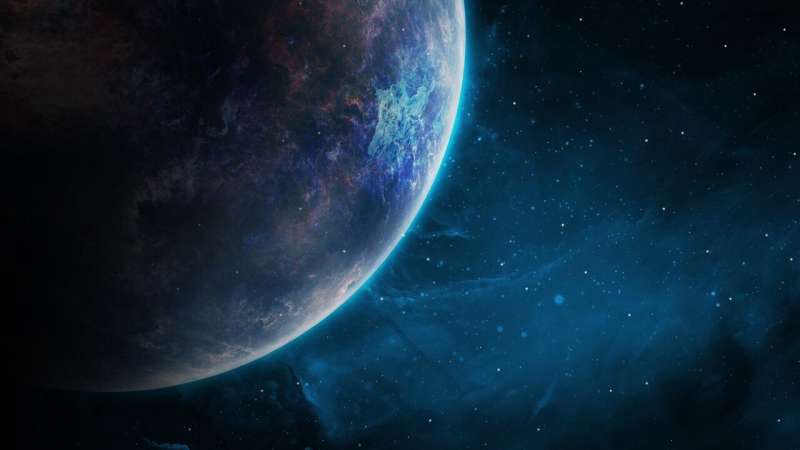Credit: Pixabay/CC0 Public Domain
Scientists at MIT, the University of Birmingham, and elsewhere say that astronomers' best chance of finding liquid water, and even life on other planets, is to look for the absence, rather than the presence, of a chemical feature in their atmospheres.
The researchers propose that if a terrestrial planet has substantially less carbon dioxide in its atmosphere compared to other planets in the same system, it could be a sign of liquid water—and possibly life—on that planet's surface.
What's more, this new signature is within the sights of NASA's James Webb Space Telescope (JWST). While scientists have proposed other signs of habitability, those features are challenging if not impossible to measure with current technologies. The team says this new signature, of relatively depleted carbon dioxide, is the only sign of habitability that is detectable now.
"The Holy Grail in exoplanet science is to look for habitable worlds, and the presence of life, but all the features that have been talked about so far have been beyond the reach of the newest observatories," says Julien de Wit, assistant professor of planetary sciences at MIT. "Now we have a way to find out if there's liquid water on another planet. And it's something we can get to in the next few years."
The team's findings will appear in Nature Astronomy. De Wit co-led the study with Amaury Triaud of the University of Birmingham in the UK. Their MIT co-authors include Benjamin Rackham, Prajwal Niraula, Ana Glidden Oliver Jagoutz, Matej Peč, Janusz Petkowski, and Sara Seager, along with Frieder Klein at the Woods Hole Oceanographic Institution (WHOI), Martin Turbet of Ècole Polytechnique in France, and Franck Selsis of the Laboratoire d'astrophysique de Bordeaux.
Beyond a glimmer
Astronomers have so far detected more than 5,200 worlds beyond our solar system. With current telescopes, astronomers can directly measure a planet's distance to its star and the time it takes it to complete an orbit. Those measurements can help scientists infer whether a planet is within a habitable zone. But there's been no way to directly confirm whether a planet is indeed habitable, meaning that liquid water exists on its surface.
Across our own solar system, scientists can detect the presence of liquid oceans by observing "glints"—flashes of sunlight that reflect off liquid surfaces. These glints, or specular reflections, have been observed, for instance, on Saturn's largest moon, Titan, which helped to confirm the moon's large lakes.
Detecting a similar glimmer in far-off planets, however, is out of reach with current technologies. But de Wit and his colleagues realized there's another habitable feature close to home that could be detectable in distant worlds.
"An idea came to us, by looking at what's going on with the terrestrial planets in our own system," Triaud says.
Venus, Earth, and Mars share similarities, in that all three are rocky and inhabit a relatively temperate region with respect to the sun. Earth is the only planet among the trio that currently hosts liquid water. And the team noted another obvious distinction: Earth has significantly less carbon dioxide in its atmosphere.
More information: Amaury H. M. J. Triaud et al, Atmospheric carbon depletion as a tracer of water oceans and biomass on temperate terrestrial exoplanets, Nature Astronomy (2023). DOI: 10.1038/s41550-023-02157-9
Journal information: Nature Astronomy
Provided by Massachusetts Institute of Technology























